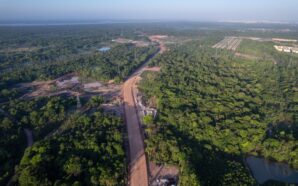NASA is seeking public help with the Daily Minor Planet project. The Daily Minor Planet Project is a program that tracks and monitors small celestial bodies, such as asteroids and comets, orbiting near Earth. The project’s primary goal is to observe these objects and predict their future paths so that relevant authorities can be alerted if they pose any risk of colliding with Earth. This information is crucial for protecting our planet and keeping us safe from any potential impact events.
Look! Up in the sky! It’s a bird! It’s a plane! It’s an – asteroid?! Okay, okay, you can’t just look up to find asteroids, but you *can* help our brand new project, the Daily Minor Planet, identify them in a huge collection of images. Let's make the news: https://t.co/jrPp7oBO8N pic.twitter.com/bxyJLexsfW
— NASA Citizen Science (@DoNASAScience) May 16, 2023
Asteroids are time capsules of our solar system and you can help @NASA discover and track them. Join @DoNASAScience’s latest project, Daily Minor Planet, and begin making your own scientific discoveries today.
☄️: https://t.co/WS1T9t5EA1 pic.twitter.com/1veCpUTasK— Dr. Nicky Fox (@NASAScienceAA) May 16, 2023
The Daily Minor Planet project is a citizen science project that invites people to help astronomers discover new asteroids in our solar system. It uses The Pan-STARRS1 telescope is, a wide-field imaging facility located on the summit of Haleakalā in Maui, Hawaii. It is designed to conduct a wide-area survey of the sky in multiple wavelengths, primarily aiming to detect and characterize near-Earth objects, such as asteroids and comets. Pan-STARRS1 uses a 1.8-meter diameter telescope equipped with a 1.4-gigapixel camera capable of imaging the entire visible sky every few days. Additionally, the telescope is equipped with various filters that allow astronomers to study objects at different wavelengths, from ultraviolet to near-infrared.
Participants help by accessing images of the sky taken by the Pan-STARRS1 telescope and then using a web interface to mark potential asteroid candidates. A team of professional astronomers then analyzes these candidates to determine whether they are known asteroids or newly discovered ones. This project allows people to contribute to the scientific community and helps us better understand the objects in our solar system.
NASA's Daily Minor Planet project is seeking YOUR help to discover new asteroids in our solar system. Studying the latest night-sky imagery, you'll be differentiating false detections from genuine asteroids!https://t.co/OFBnzFAQOR
📸 Daniel Oberhaus/ Wikimedia Commons pic.twitter.com/e6Dg0g6tmf
— EarthSky (@earthskyscience) May 19, 2023
NASA often encourages the public to get involved in the search for asteroids and other near-Earth objects. Several programs and initiatives, such as the citizen science project called “Target Asteroids!” allow amateur astronomers to contribute their observations and data to help NASA track and study asteroids. Additionally, there are several online resources and tools that anyone can use to learn more about asteroids and how to spot them. So if you’re interested in getting involved and helping out, there are definitely opportunities to do so!
-
Credit: Shutterstock As President Donald Trump abruptly turned against Rep. Marjorie Taylor Greene, one of his most vocal supporters,...
-
Credit: Shutterstock In a week already filled with intense public scrutiny around the long-shadowed Jeffrey Epstein saga, new commentary...
-
Credit: Shutterstock Today, Apple announced the release of Digital ID, a new and safe method for American iPhone and...
-
This Songs Hits Right in the Feels! Singer-songwriter Sheena Melwani has once again captured hearts with her new...
-
Credit: Shutterstock The world is reeling from the irony this week after reports confirmed that over 100,000 trees were...
-
Credit: Shutterstock In a dramatic twist that’s sent shockwaves through both sides of the Atlantic, U.S. President Donald Trump...
-
Credit: Shutterstock It looks like SZA is putting the rumors to rest — and doing it with grace. In...
-
Credit: Shutterstock As Hurricane Melissa tore across the Atlantic, shattering records and testing the limits of modern aircraft, a...
-
Credit: Shutterstock President Donald J. Trump sparked fresh political fireworks during a wide-ranging interview on CBS’ 60 Minutes, revealing...
-
Credit: Shutterstock Tiffany “New York” Pollard and “Flavor Flav” Reunite in Halloween Surprise Reality TV royalty met daytime TV...
-
Credit: Shutterstock Artificial intelligence (AI) is already a part of our everyday lives and is no longer a sci-fi...
-
Credit: Shutterstock Kid Rock Sparks Outrage Over Halloween Remark Kid Rock is once again stirring controversy — this time...




















